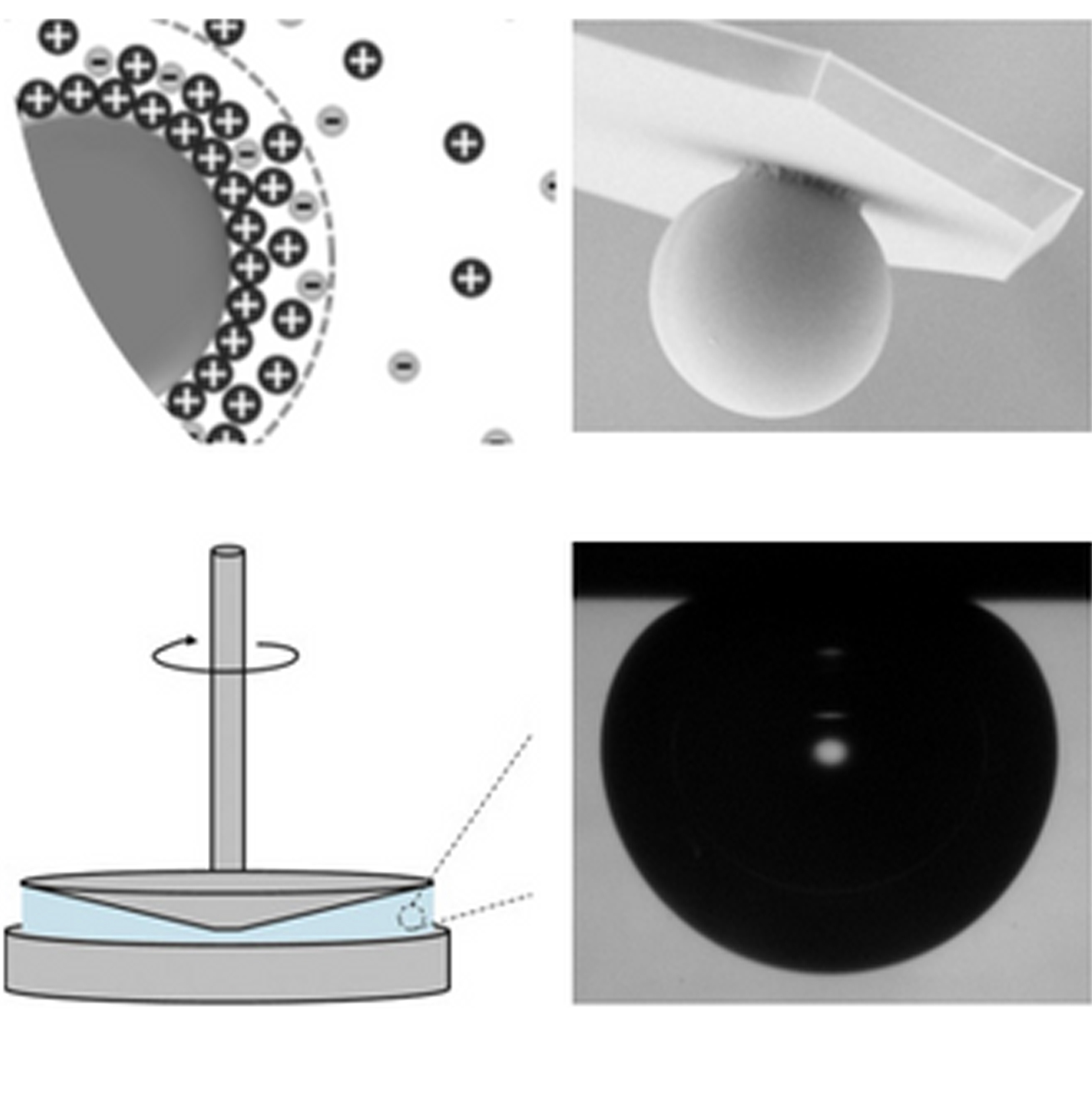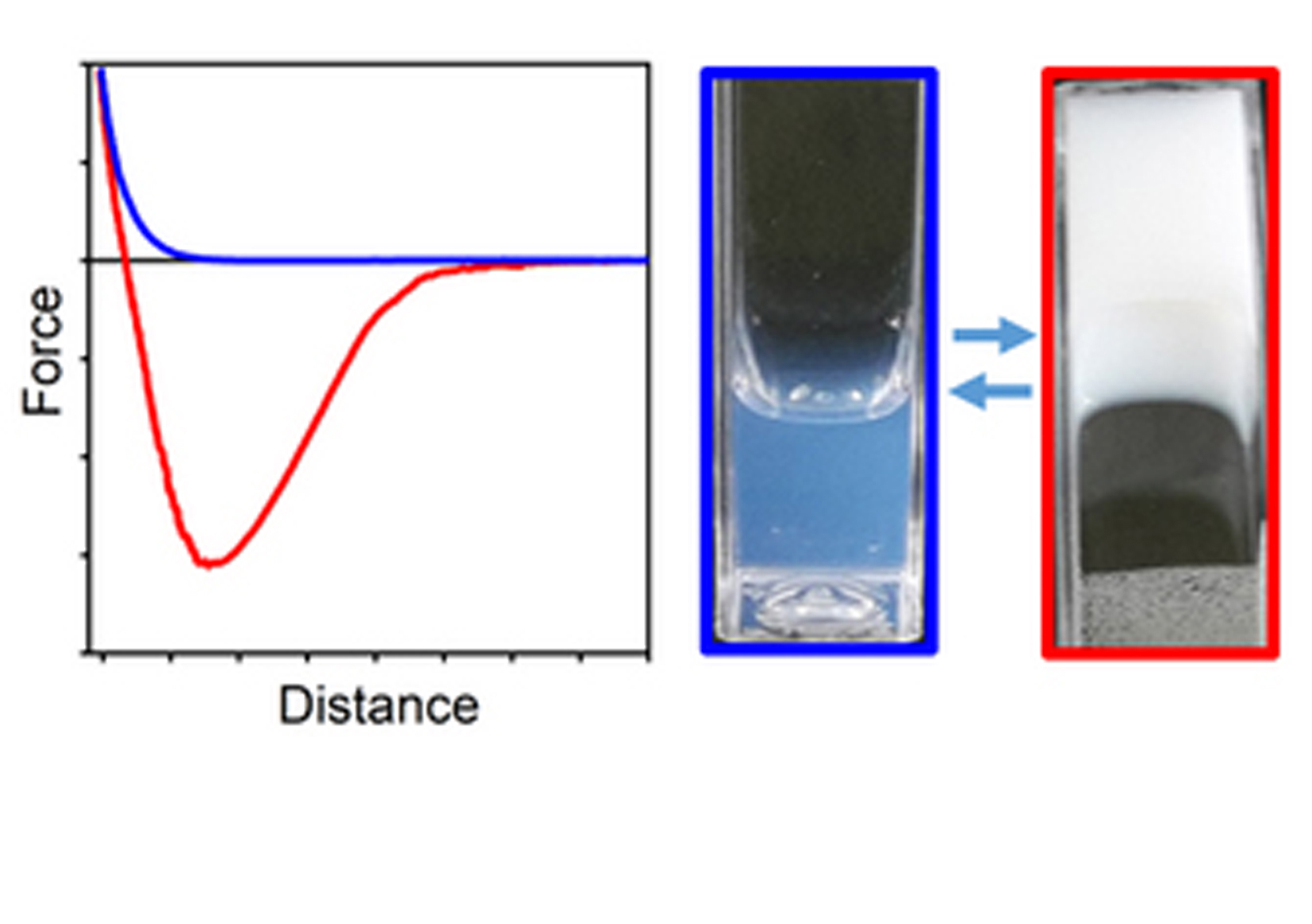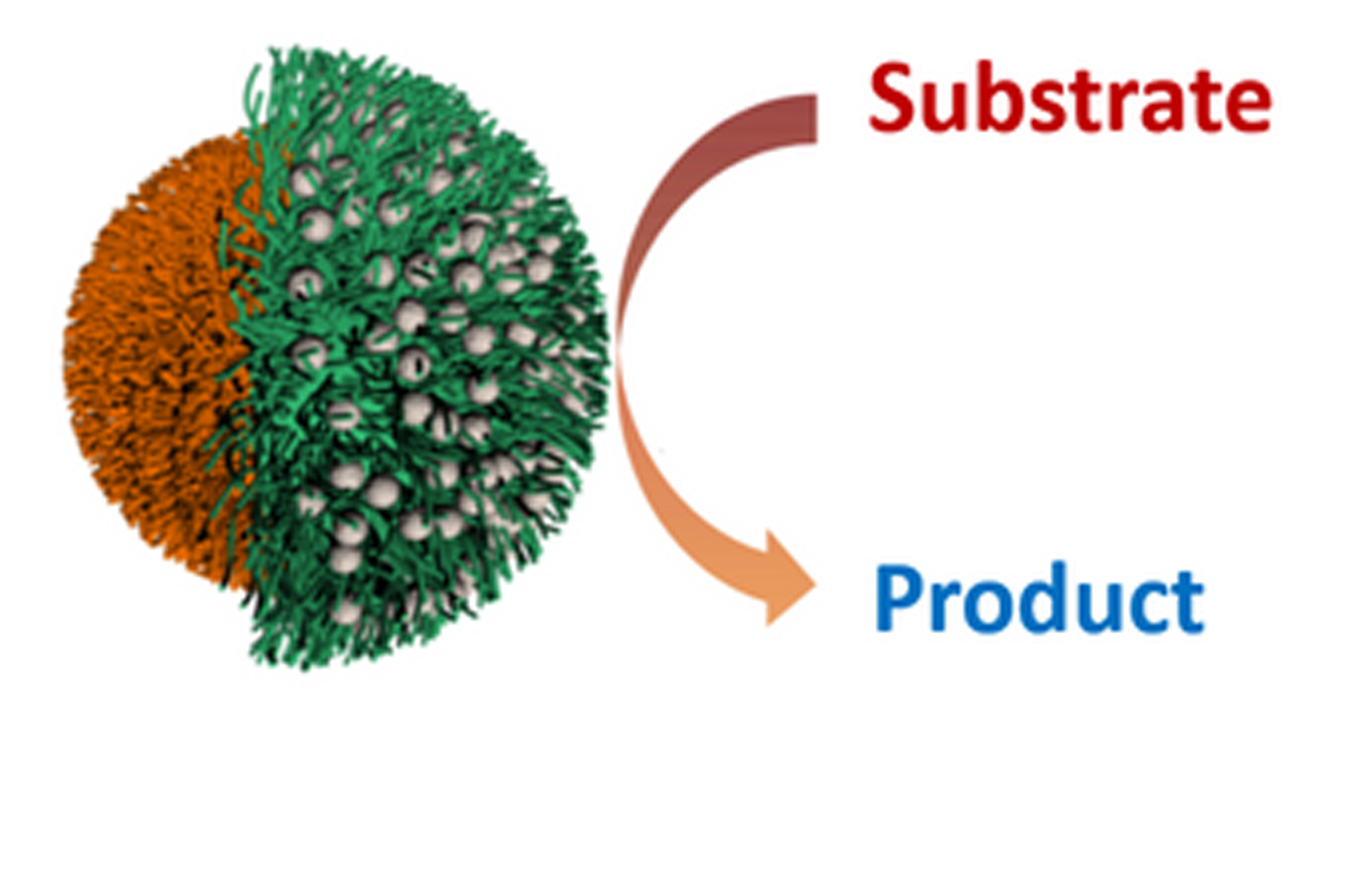Research
Materials

Polymer interfaces & patchy (Janus) particles
Chemical and physical properties of interfaces as well as their spatial arrangement, dynamics and adaptability are important for targeted material performance. Our group has strong competencies in the controlled modification of interfaces with stimuli-responsive polymers and polymeric/hybrid particles. The polymers with tailored architectures (linear, random, graft-, or block-copolymer) are immobilized onto surfaces using controlled polymerization (ATRP) and grafting (grafting to, grafting through, grafting from) techniques. We develop a library of polymeric/hybrid patchy particles possessing controlled chemical functionalities, symmetric and Janus architectures, various shapes (spheres, dumbbells, rods, platelets), sizes, mechanical and responsive properties. For this free radical polymerization, incl. emulsion as well as precipitation polymerization routes are used.
Selected key publications: Soft Matter 2017, 13, 1074-1084; ACS MI 2019, 11, 1645; Chem. Mater. 2016, 28, 6995-7005; ACS Appl. MI, 2016, 8, 32591-32603; ACS MI, 2015, 7 (38), 21218-21225.

Understanding of macroscopic interfacial phenomena and their molecular origins
Our group has a strong expertize in the characterization of polymer interfaces and fundamental understanding of molecular and microstructural mechanisms and their effect on macroscopic properties of materials.
- Surface charge via Electrokinetics: electrophoresis and streaming potential/streaming current, sedimentation potential (also in cooperation with KeyLab Applied Electrokinetics at IPF Dresden/ https://www.ipfdd.de/de/organisation/abteilungen-und-gruppen/institut-physikalische-chemie-und-physik-der-polymere/abteilungen/polymergrenzflaechen/arbeitsgebiete/electrokinetics)
- Dynamic and static light scattering
- Wet & dry adhesion on micro-and macro scale (AFM CP & tack probe)
- Wettability via pendant and sessile drop
- Swelling and adsorption in/at thin films via ellipsometry (kinetic liquid state experiments).
- Bulk Rheology
Our group has also strong expertise in ESEM, (cryo)-TEM, EFTEM methods.
Selected key publications: Surface and Interface Analysis 2020, 52 (12), 991; Advances in Colloid and Interface Science 2015, 222, 350; Macromolecules 2019, 52, 10, 3852; Soft Matter 2017, 13, 1074; J. Mol. Sci. 2019, 20, 6295; Inorg. Chem. 2016, 55, 7206; Macromolecules 2014, 47, 8377; Soft Matter, 2011, 7, 5691.
Functions and Applications

Bio-inspired interfaces & wet adhesion
We aim to develop versatile approaches for the fabrication of multicomponent and multifunctional adhesive materials, which are sticky on demand to a variety of biologically relevant wet surfaces and more generally to surfaces in wet environments.
Selected key publications: Int. J. Mol. Sci. 2019, 20, 6295; Macromolecules 2019, 52, 10, 3852; Macromolecules 2014, 47, 8377-8385; Langmuir 2012, 28, 16444; Soft Matter, 2011, 7, 5691; Soft Matter, 2010, 6, 5907.

Biocatalysis & Biosensors
Our group aims at the application of stimulus-responsive patchy and Janus particles for (bio) catalysis in dispersions and emulsions. We translate obtained fundamental knowledge on the particle design for the immobilization of biomolecules (enzymes) towards biotechnological applications in water purification and biosensing. The aspects of scale-up and recyclability are considered.
Selected key publications: ACS Appl. Mater. Interfaces, 2015, 7 (38), 21218; ACS Appl. Mater. Interfaces, 2019, 11 (1), 1645; Soft Matter 2017, 13, 1074; Colloid and Polymer Science 2020, 298:841.
